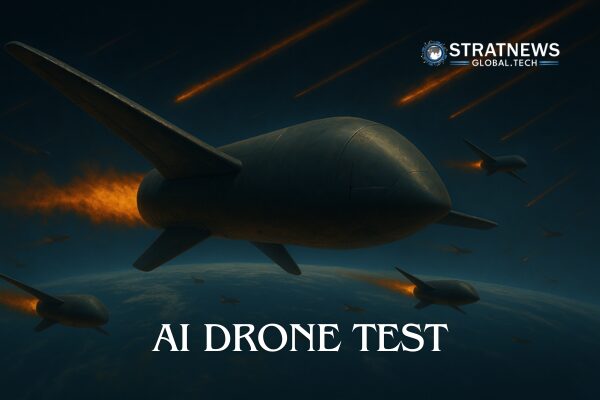Kim Jong Un Oversees AI Suicide Drone Test, Calls for Tech-Driven Weapons Focus
North Korean leader Kim Jong Un has overseen the testing of artificial intelligence-powered suicide drones, emphasising the need to prioritise unmanned control and AI in the country’s weapons development. The announcement was made by state-run media on Thursday, 27 March.
Emphasis on AI and Unmanned Warfare
According to the Korean Central News Agency (KCNA), Kim highlighted that AI suicide drones and AI-based military systems must become central to modern arms development. His comments underline North Korea’s increasing focus on advanced technology to strengthen its defence capabilities.
During the test, a fixed-wing unmanned aerial vehicle (UAV) was seen targeting a tank-shaped object before detonating in flames. This display signals North Korea’s push to incorporate AI into its combat strategies, particularly through automated and remote-controlled weaponry.
New Reconnaissance and Electronic Warfare Systems
In addition to the suicide drone demonstration, Kim also inspected newly upgraded reconnaissance drones. These UAVs are reported to be capable of tracking tactical targets and monitoring enemy movements both on land and at sea.
KCNA added that Kim reviewed advanced equipment designed for intelligence gathering, electronic jamming, and other offensive systems. These new assets appear to broaden North Korea’s surveillance and electronic warfare capabilities.
Images Show Larger-Scale AI Suicide Drones and Surveillance Aircraft
State-released photos captured Kim alongside a drone that appeared significantly larger than a typical fighter jet. The images also showed him boarding a large four-engine aircraft equipped with a radar dome on its fuselage. Kim was later seen observing the plane during a low-altitude fly-by, further highlighting North Korea’s evolving air surveillance assets.
These developments suggest a strategic shift in Pyongyang’s military focus, where unmanned systems and artificial intelligence are expected to play key roles in future operations.
with inputs from Reuters


